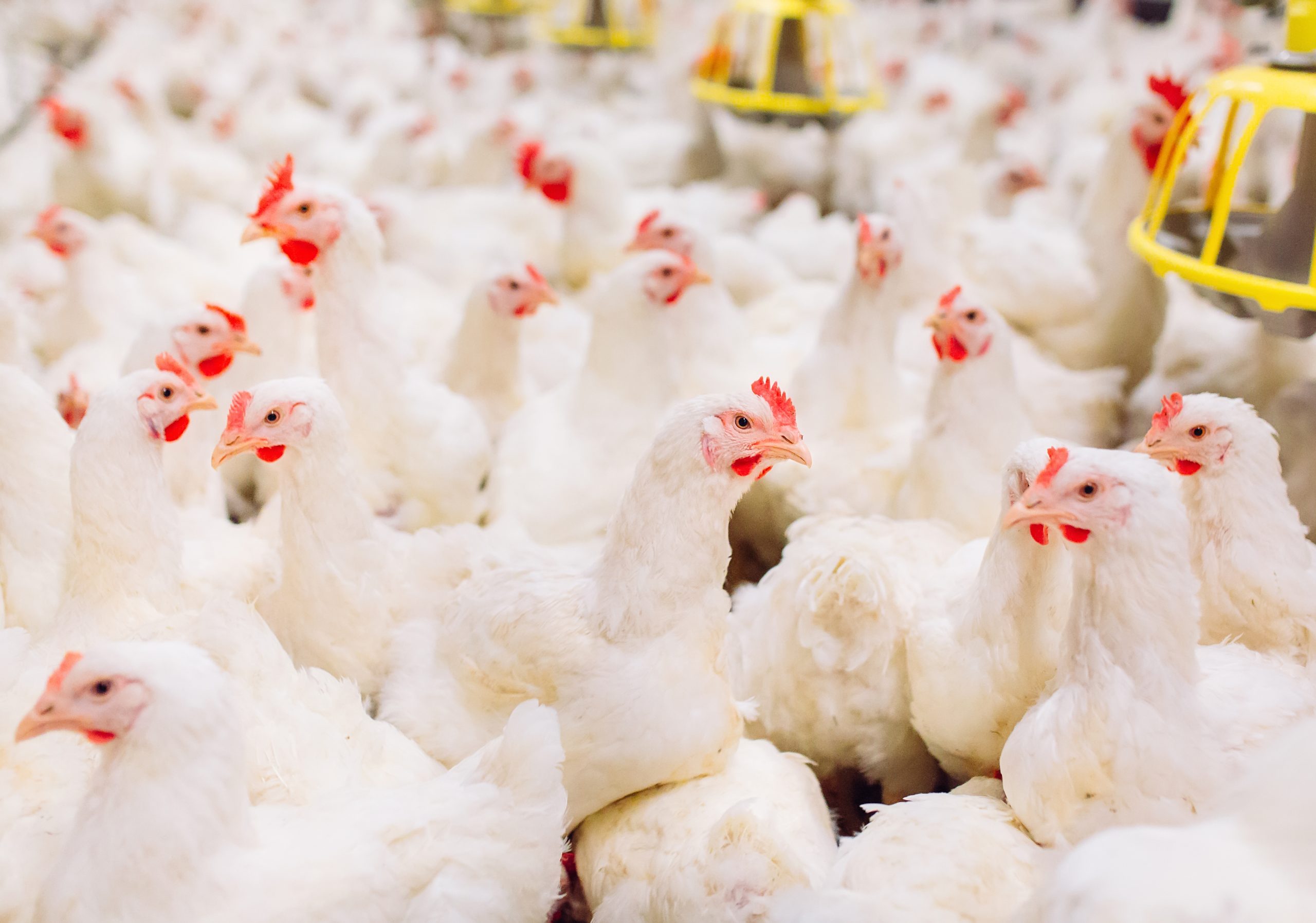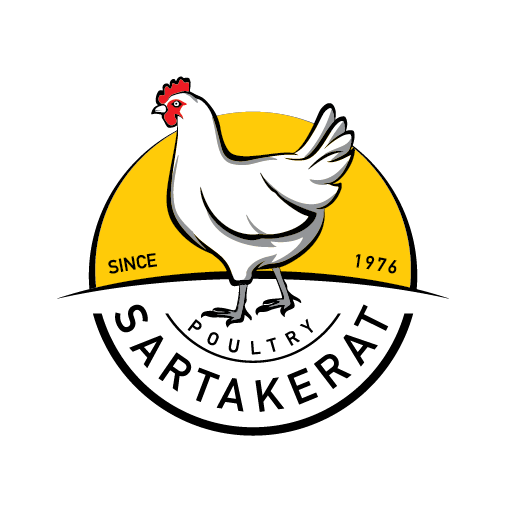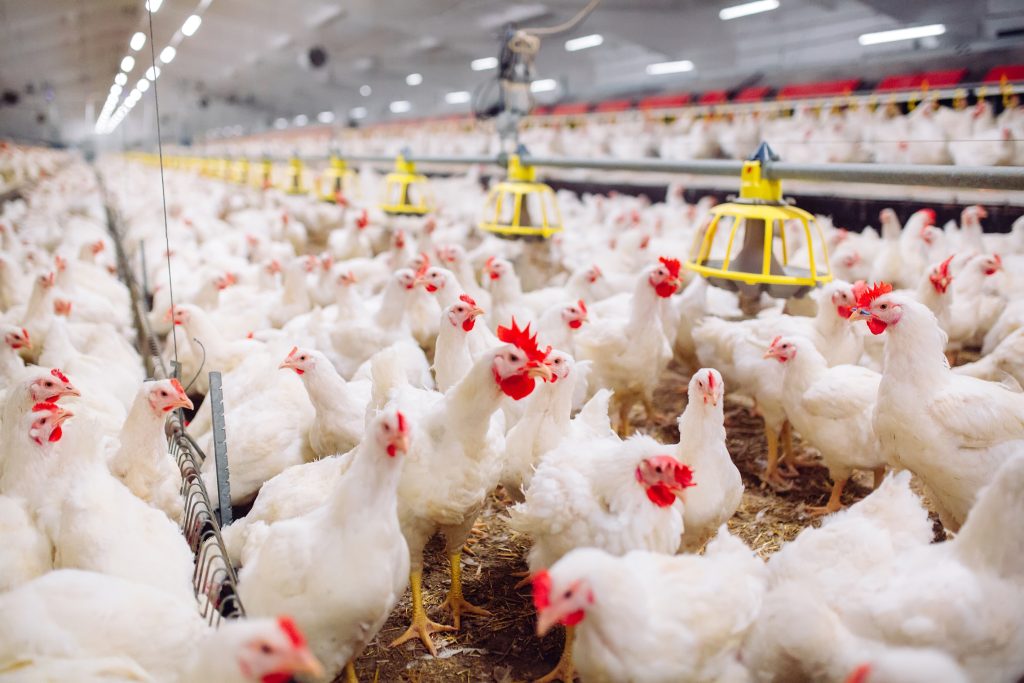
Introduction
Today, in the poultry breeding industry of the world, biological security is in the center of attention and the need to design and adhere to its implementation is emphasized in all articles and reference books. In one word, biosecurity is equivalent to "awareness", such that a series of basic principles are achieved about how diseases are transmitted, and then this is combined with experience. Ultimately, the goal is to ensure that the disease does not enter the poultry farm and that the poultry exposed to it, with a coherent biological security program, provide conditions to eliminate or minimize the presence of pathogenic agents in the farm environment to a relatively low level. Or be completely safe.
Farm design and construction
The plan and construction plan of each poultry breeding unit must be implemented according to the main purpose of the said unit and all its needs and complying with all technical and sanitary points. The more studies are done during the preparation of plans and maps. There will be fewer problems in the future. When preparing the plans, the appropriate distance between the halls and other facilities should be observed, and in large complexes, the appropriate distance between different units should also be taken into consideration.
By increasing the distance between the salons, the possibility of disease transmission decreases. Building materials used in the construction of halls, facilities and grounds should be selected according to the weather conditions of the region so that they have the necessary strength, durability and efficiency. Poultry equipment and tools should be of the types that meet technical and sanitary standards and can be easily opened and closed, washed and disinfected. When building a farm, a series of general factors are involved, some of which are:
Office and residential buildings should be built at the entrance of the farm.
Disinfection pool with suitable dimensions and depth for people and vehicles should be installed at the entrance of the farm.
Halls should have the necessary facilities and equipment to provide a calm environment for the herd. For example, the suitable temperature for raising broiler chickens varies between 33 (day-old chicks) and 20 degrees Celsius (end of period) or the humidity should be between 50 and 70 percent. Therefore, these items should be considered when designing and building a chicken coop.
Designing the farm in such a way that it is not easy to access and enter it, there is only one door to enter the farm.
The number of halls built in a farm should be designed and built based on the plan approved by the relevant bodies. Otherwise, the risk of disease transmission will greatly increase and it will be difficult to implement prevention and control programs.
Under no circumstances should broiler, egg-laying or mother poultry flocks be raised together in the same farm.
The movement path in the poultry farm should be one-way, that is, from the hall containing younger poultry to the older poultry hall or from clean areas to unclean areas.
Internal and sanitary conditions of the poultry house
In terms of internal and sanitary conditions and the relationship of the structure with poultry, the following points should be considered:
Providing the necessary space
Determining the right space for the flock is very important from the point of view of health and economy, because too much concentration of chickens in a limited space causes the spread of various diseases in the flock, and on the other hand, providing too much space for the chickens is economically expensive. it is not worth it. Therefore, predicting the necessary and suitable space is one of the basic principles of poultry breeding buildings.
The amount of space that should be considered for keeping each chicken in a poultry farm depends on the environmental and geographical conditions, breed, age and breeding system. In hot weather, more space should be provided for chickens. Heavy breeds that are large in size need more space. The breeding system is also effective in the amount of space required. If the chickens are kept completely confined, they should be provided with more hall space. Necessary provisions should be made for the minimum amount of space used in terms of insulation and ventilation, otherwise, in chicken farms where the necessary provisions have not been made, the maximum amount of space should be provided to chicken flocks.
The general criteria of the space required for breeding poultry should be observed according to the livestock system book. Keeping a large number of chickens or chickens in a small and insufficient space causes a decrease in growth and late feathering, as well as the occurrence of cannibalism, and in laying hens, it causes a decrease in egg production and an increase in casualties, especially contagious infectious diseases and There are other problems. Ventilation in the poultry house is important from several points of view:
Provide adequate oxygen.
Emission of carbon dioxide and other harmful gases produced from the hall.
Keeping the humidity of the chicken house at the right level
Discharge of unpleasant odor due to decomposition of feces
Preventing the accumulation of microorganisms in indoor spaces through air movement
It should be known that the metabolism in birds is very high and therefore the amount of air they need per unit of weight is more than other animals. The amount of space and air needed by each bird depends on the air flow in the poultry house and also the temperature difference between the inside and outside of the poultry house. In a limited space, the amount of air depends on the height of the hall, and the higher the ceiling, the more ventilation and the amount of breathing air.
Ventilation is very important in terms of preventing respiratory diseases because lack of ventilation often creates a favorable environment for respiratory diseases and especially Newcastle, infectious bronchitis. According to the conducted research, chronic respiratory disease is reported to be the biggest cause of death among poultry, and improper ventilation has been identified as the most important predisposing factor for this disease. Ventilation in winter is often more difficult than in summer, because ventilation in winter makes the halls cold, and if this is not done well and carefully, it causes a sudden change in temperature and increases the risk of respiratory diseases.
Proper ventilation also reduces the humidity, so you can control the humidity in the halls with proper ventilation and always keep it at the right level. Ventilation in halls is generally done in two ways:
Natural ventilation
Artificial or mechanical ventilation
In natural ventilation, wall windows, ceiling windows and the like are used. Natural ventilation depends on the construction of the poultry house, the location of the halls in terms of air flow, and the direction and placement of the windows. In halls where a large number of chickens are kept, natural ventilation is not enough and artificial (mechanical) ventilation should also be used. The amount of artificial ventilation in the hall depends on the number of chickens and their weight, as well as how the ventilation devices are located. First of all, the correct efficiency of a ventilation method is closely related to the height of the hall. Halls whose wall height is two meters or more are suitable for ventilation. In the case of mechanical ventilators that are regulated through electric current and electrical circuits. In addition to the height of the ceiling, the installation location, the size of the air outlet and inlet, and the air path will also play an important role in ventilation.
Heat supply
One of the main goals of the poultry house is to keep the internal temperatures of the hall at the right level. The building of the halls should be warm in the winter and cool in the summer, and in the conditions of our country, where there is often a big difference between the summer and winter heat, keeping the temperature of the halls at the right level often creates problems, but considering Taking the principles of scientific architecture can provide suitable conditions for chickens in terms of optimal temperature.
The standard set for the appropriate temperature on the first day (one-day-old chicks) is 32-35 degrees Celsius. As chickens grow, they need less heat. An increase and a decrease in temperature both cause discomfort to the bird, and heat affects the chicken more than cold. The temperature of the hall affects the bird’s immune system as well as pathogens, and very low temperatures can have an adverse effect on the function of the immune system, and at the same time, it should be noted that the pathogenic power of most microorganisms will be maintained at low temperatures for a long time. .
In very cold weather, suitable heating devices should be used to create a suitable temperature in the hall. In addition to heating the hall, this also causes the humidity to decrease. In hot weather, the air inside the hall can be cooled to a certain extent by using insulating materials, windows, and electrical devices such as air conditioners or spraying water on the ceiling. Achieving the optimal temperature for poultry at all ages and times is one of the goals of a successful breeding.
Therefore, the temperature of the halls should be controlled several times a day to always be appropriate to the age and condition be poultry Maximum and minimum thermometers are used for better control and recording of the highest and lowest temperatures in the halls. The suitable room temperature for a day-old chick is between 32-35 degrees, after which it decreases by 2-3 degrees every week, until it reaches 20-22 degrees at the age of 5 weeks. In laying hens, the ideal temperature is between 17-20 degrees.
Unfavorable fluctuations in temperature have consequences at all ages, but poultry are more sensitive to cold stress in the first days of life and to heat stress in older ages. In rearing with bedding conditions, if the room temperature is lower than the optimal level, the uniform distribution of chickens in the room will be disturbed. They tend to get closer to each other and to the heat source. Because of their desire to warm up, the chickens go under each other, which causes some of them to suffocate. Abnormal accumulation and sleeping of chickens in the feeding trays is also a consequence of the decrease in the temperature of the hall.
In laying poultry, due to the existence of food restrictions when the room temperature is low, part of the food energy is spent on heating the bird’s body and egg production is reduced. In general, lowering the temperature of the hall causes a feeling of coldness and gathering together, increasing the consumption of manure due to the need for more energy, increasing the possibility of respiratory diseases and also increasing the food conversion factor. An increase in the temperature of the salon causes an increase in water consumption, body heat, tension, and in some cases causes heatstroke, an increase in the possibility of cannibalism and watery stools.
Also, reducing the natural movements of chickens, reducing egg production and egg quality, reducing egg shell quality, reducing food consumption and body weight are among the side effects of high indoor temperature. It is recommended that the heat supply source be in a room and outside the hall so that warm and healthy air enters the hall through suitable channels and distributes the warm air evenly throughout the hall. According to the geographical conditions, the cooling system should be in such a way that in the hottest season of the year, the air temperature inside the hall will be reduced to an appropriate amount, in such a way as to prevent the mouth breathing of the chickens.
Creating a suitable atmosphere in terms of the weather conditions in the halls requires ventilation management to adjust various effective factors. Ventilation management is actually finding the best space inside the poultry house considering the following factors:
Prevailing weather conditions outside the poultry house
Characteristics and characteristics of the herd in the hall (age, density, species)
Energy costs (ventilation and heating)
The condition of the structure and its facilities and equipment.
In industrial and dense poultry farming, the factors of temperature, humidity, speed and air circulation must be considered and calculated together so that the effects of each other do not fluctuate. The amount of gas, the amount of dust and the microbial load in the air rarely act alone, and in fact, it is the negative combination of several of them that creates an imbalance. Identifying the losses caused by creating an imbalance in atmospheric factors on the herd and introducing ways to control them will lead to the success of ventilation management. Some of the ways to control the imbalance of climate conditions in the hall, which are very important, include the following:
To prevent cold damage to day-old chicks, the poultry house should be heated 48 hours before the arrival of new chicks.
Prevent any thermal changes of more than 5 degrees Celsius during a 24-hour period and avoid excessive heating of the halls at the end of the isolation period.
To prevent dust, increase the adhesion of the substrate by increasing the humidity of the salon (sprinkling allowed disinfectants on the substrate is also recommended).
To control ammonia gas, the ventilation of the halls should be increased and the temperature and humidity should be decreased.
Humidity:
Birds, like all other creatures, need some moisture because they have a very fast metabolism. Therefore, if the air in the poultry house is too dry, the birds will immediately show sensitivity to this because the evaporation of water through the lungs in the bird is high, therefore, if the hall is not well ventilated, the amount of humidity in the hall will increase. and this is important in terms of the spread of some diseases because some pathogens can grow in high humidity and keep their pathogenic properties.
This is especially true for intestinal parasites (Eimeria in particular). Therefore, wet salons are a permanent source of these diseases. Insulated floors and walls, as well as good and correct ventilation, reduce the amount of humidity and, as a result, improve the health conditions of the hall.


